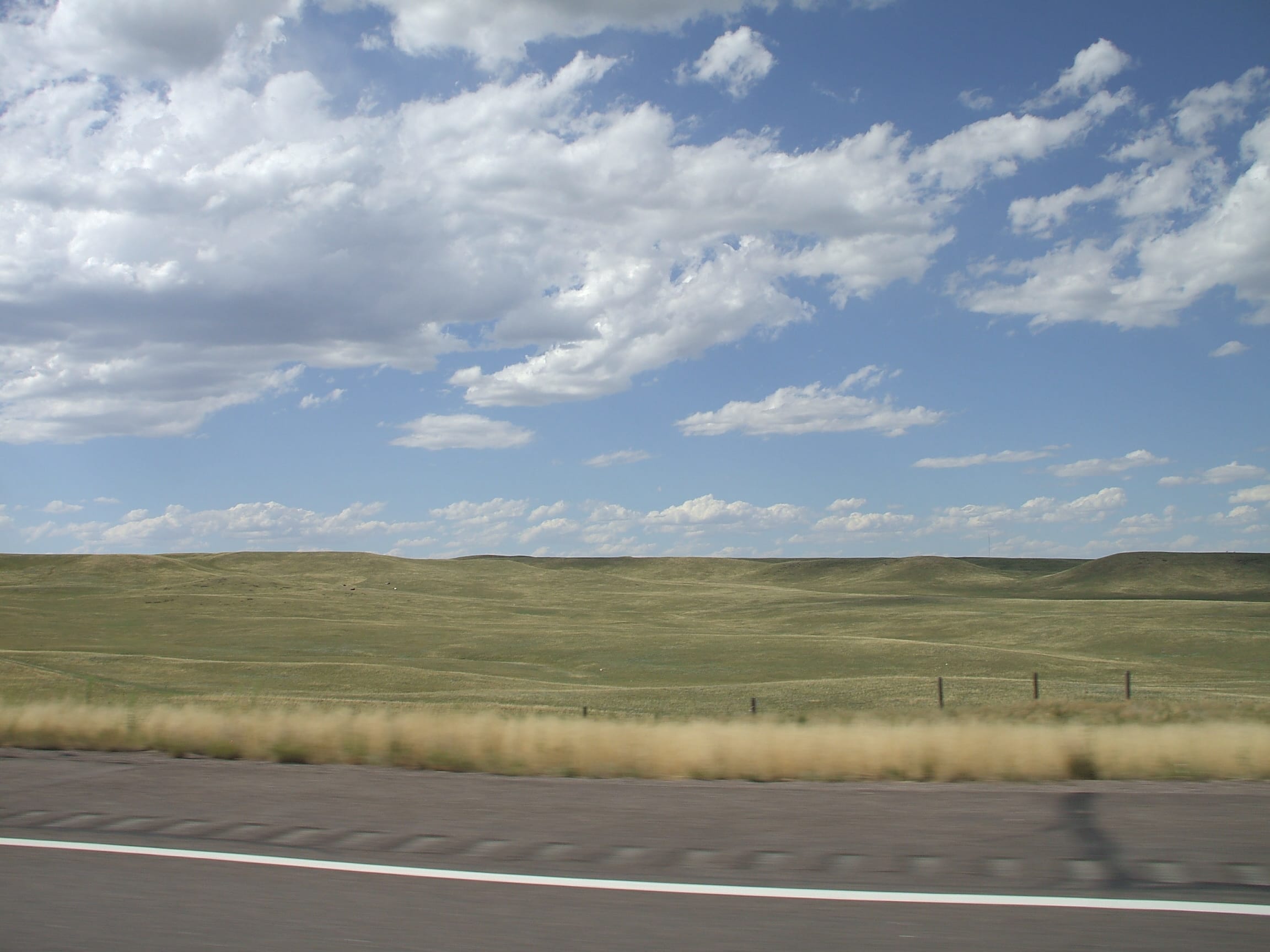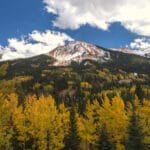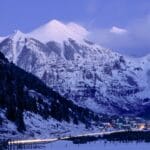Welcome to Cheyenne, Wyoming, the “Magic City of the Plains”—a city set against a backdrop of the majestic Rocky Mountains. But Cheyenne’s charm isn’t just about its Wild West history and stunning landscapes; it’s also about its altitude. At a lofty 6,089 feet above sea level, Cheyenne holds the title of one of the highest state capitals in the US. This high-altitude personality influences everything from the air you breathe to the adventures you embark on. Let’s explore how Cheyenne’s elevation shapes the city and what you need to know before you go.
Breathing in the Mountain Air: Altitude’s Effects
While 6,089 feet might not sound dramatically high, it’s enough to impact your body, especially if you’re arriving from lower elevations. This is because the air gets “thinner” as you climb higher, meaning there are fewer oxygen molecules per breath.
Altitude Sickness: What to Expect
Some visitors to Cheyenne might experience mild altitude sickness, especially during the first day or two. This can manifest as:
- Headache: The most common symptom.
- Fatigue: Feeling unusually tired or short of breath.
- Nausea or Dizziness: Your body adjusting to the change in air pressure.
- Sleep Disturbances: Difficulty sleeping soundly at night.
Don’t Worry: Most people acclimatize quickly, and symptoms usually subside within 24-48 hours.
Tips for Handling Cheyenne’s Altitude
- Hydration is Key: Drink plenty of water to help your body adjust.
- Take It Easy: Avoid strenuous activities for the first day or two.
- Listen to Your Body: Rest if you feel unwell, and don’t hesitate to seek medical advice if symptoms worsen.
- Consider Altitude Sickness Medication: Consult your doctor about preventative medication if you’re prone to altitude sickness or have concerns.
Cheyenne’s Climate: A High-Altitude Mix
Cheyenne’s elevation doesn’t just affect how you breathe—it also influences the weather. Be prepared for a unique climate that’s a blend of sunshine and surprises.
- Sunshine Reigns: Enjoy over 300 days of sunshine a year, but be prepared for sudden changes.
- Dry Air: The air is significantly drier at higher altitudes, so pack moisturizer and stay hydrated.
- Cooler Temperatures: Expect cooler temperatures than at lower elevations, even in summer.
- Rapid Weather Shifts: Be ready for anything—sunshine, wind, and even a sudden snow flurry are all possible in a single day!
Packing for Cheyenne’s Elevation
Here’s what to pack to be prepared for Cheyenne’s high-altitude climate:
- Layers: Pack clothing that can be easily layered, such as t-shirts, long-sleeved shirts, sweaters, and a light jacket.
- Sun Protection: The sun’s rays are stronger at higher altitudes, so pack sunscreen (SPF 30 or higher), sunglasses, and a hat.
- Comfortable Shoes: Pack comfortable walking shoes for exploring the city and hiking trails.
Outdoor Adventures With a View
Cheyenne’s high-desert landscape and proximity to the Rocky Mountains make it an outdoor enthusiast’s paradise. But its elevation adds an extra layer of challenge and reward to any adventure.
- Hiking & Biking: Explore scenic trails with breathtaking panoramic views. Just remember to take it slow, especially during the first few days of your trip.
- Camping Under the Stars: Experience the magic of a night sky illuminated by millions of stars, unobstructed by light pollution. However, be prepared for cooler nighttime temperatures.
- Rock Climbing & Bouldering: Test your skills on challenging rock formations while enjoying stunning views. Acclimatize properly and know your limits.
Important Note: If you’re planning a more intense outdoor adventure, it’s always a good idea to consult with a local guide or outfitter. They can provide valuable advice on altitude acclimatization, safety precautions, and the best trails and spots to suit your experience level.
Cheyenne: A City Shaped by Altitude
Cheyenne’s altitude isn’t just a number—it’s a defining characteristic. It shapes the climate, influences the types of plants and animals that thrive here, and adds an element of challenge and reward to outdoor activities.
When you visit Cheyenne, you’re not just visiting a city; you’re experiencing a place where the sky feels closer, the air is crisp and clean, and the views are simply breathtaking. Embrace the altitude, pack smart, and get ready to be captivated by Cheyenne’s unique high-altitude charm.
Cheyenne, WY Altitude: SEO Deep Dive
Here’s a breakdown of how to outrank the competition and make your article the go-to resource for information on Cheyenne, Wyoming’s altitude:
Competitor Analysis:
Many websites focus on basic keyword variations like “Cheyenne, Wyoming elevation” or “altitude of Cheyenne, WY.” To stand out, you need to offer more value, address specific user questions, and optimize your content for search engines.
Winning Title Options:
- Cheyenne, Wyoming Elevation: How Altitude Affects Your Visit (And What To Expect)
- Above It All: Exploring Cheyenne, WY at 6,089 Feet
- Cheyenne’s High Altitude Highlights: Breathtaking Views & Things To Do
Powerfully Engaging Key Lines:
- Cheyenne, Wyoming sits at a breathtaking elevation of 6,089 feet above sea level, making it one of the highest state capitals in the United States.
- The city’s altitude contributes to its stunning scenery, clear skies, and potential for altitude sickness, so prepare accordingly for an unforgettable visit.
- While Cheyenne’s base elevation is 6,089 feet, the surrounding terrain varies, reaching over 7,500 feet in some areas, offering stunning views and hiking opportunities.
- Understanding Cheyenne’s elevation is key to planning your trip, from packing appropriate clothing to managing potential health impacts.
Essential Details:
- Cheyenne’s official elevation: 6,089 feet (1,856 meters)
- Elevation range within city limits: Approximately 6,000 to 6,500 feet
- Highest point near Cheyenne: Research indicates areas exceeding 7,500 feet in Laramie County.
- Altitude sickness: Cover symptoms, prevention, and when to seek medical attention.
- Cheyenne’s topography: Describe the high plains, nearby mountain ranges (mention specific peaks visible from Cheyenne), and hiking opportunities.
Answer User Questions:
- “How high is Cheyenne, Wyoming?”
- “What is the altitude of [specific landmark in Cheyenne]?”
- “What should I know about visiting Cheyenne at a high altitude?”
Unique Insights to Set Your Article Apart:
- Compare Cheyenne’s altitude to other popular destinations.
- Create a graphic visualizing Cheyenne’s elevation.
- Interview locals about living at a high altitude.
- Explore the flora and fauna found at Cheyenne’s elevation.
- Highlight historical connections to Cheyenne’s altitude.
Don’t Forget:
- Use visuals: Maps, charts, and stunning images of Cheyenne.
- Write clearly and engagingly.
- Optimize for SEO: Use relevant keywords.
Is Cheyenne, WY High in Altitude?
At 6,062 feet above sea level, Cheyenne’s elevation is definitely a change of pace from places closer to sea level. To put that into perspective, the average elevation in the U.S. is around 2,500 feet. Cheyenne’s high-altitude location means stunning views of the Rocky Mountains and incredibly clear skies.
While most people acclimate to the altitude within a day or two, it’s wise to take it easy upon arrival. Listen to your body, drink plenty of water, and consider going easy on the caffeine and alcohol, as these can sometimes intensify altitude sickness symptoms.
Why is Wyoming’s Elevation So High?
Wyoming boasts the highest average elevation of all the lower 48 states. This dramatic landscape is the result of millions of years of geological activity:
- Rocky Mountain Uplift: The collision of massive tectonic plates, known as the Laramide Orogeny, pushed up the Earth’s crust, forming the Rocky Mountains.
- High Plains Formation: As the Rockies rose, the land to the east was also uplifted in a process called isostatic rebound, creating the vast plateau of the High Plains.
- Basin and Range Stretching: The Earth’s crust in southwestern Wyoming stretched and thinned, creating a landscape of alternating basins (valleys) and ranges (mountains), further adding to the state’s elevation variation.
What Town in Wyoming Has the Lowest Elevation?
Wyoming’s lowest point, at 3,099 feet above sea level, isn’t found in a town but along the Belle Fourche River as it flows into South Dakota. This makes Wyoming’s “low point” the second-highest of all U.S. states, highlighting just how elevated the state truly is.
If you’re planning a trip to Durango, Colorado, check the weather forecast to plan your outfits for the altitude, in case it affects your vacations plans.












